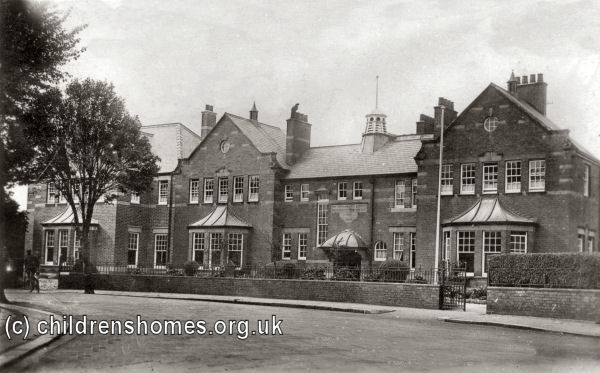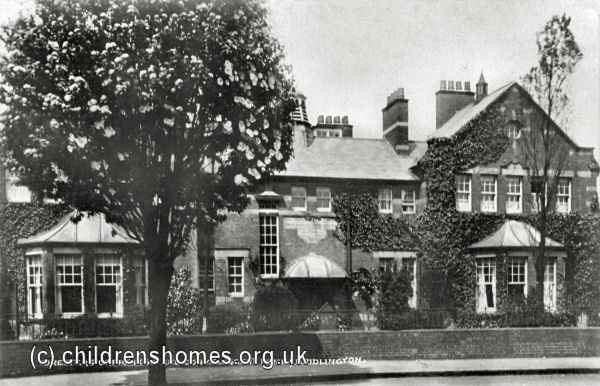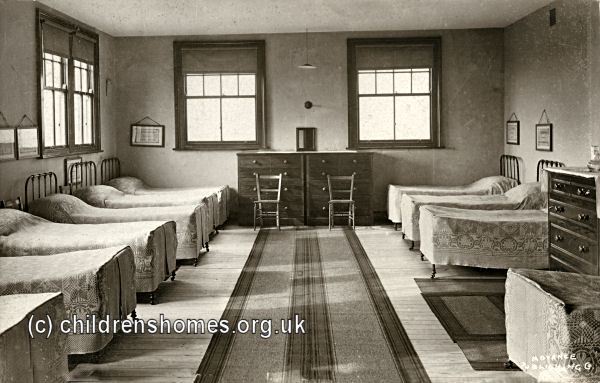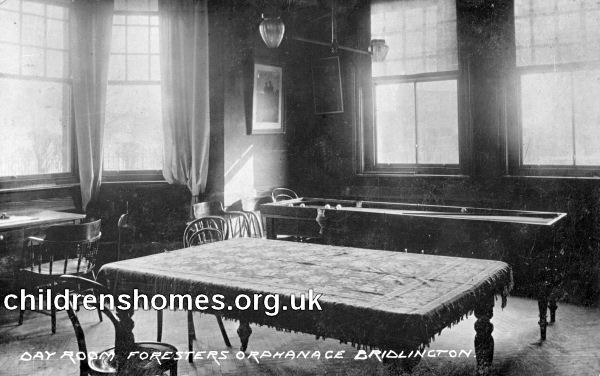Foresters' Orphanage, Bridlington, East Riding of Yorkshire
The Ancient Order of Foresters was a Friendly Society, or mutual benefit association, said to have been founded in Yorkshire in the eighteenth century. The society provided financial, welfare and social support to members, who paid a monthly subscription, and it also undertook charitable works. The membership was organised through local groups known as courts, a term derived from the law courts of the law courts of the royal forest. Like many such organisations, the Foresters adopted their own ceremonial regalia and procedures.
In around 1840, the Foresters discussed the possibility of establishing an orphanage, although nothing came of it. The idea was revived in 1885, when a meeting of Foresters delegates at Wakefield agreed to pursue the matter and begin raising the necessary funds. Progress was slow, with around £300 having been contributed by June, 1888. In the meantime, the Orphanage Committee decided to begin boarding-out a small number of orphans when finances permitted. In May, 1889, it was agreed that two children — Annie Shaw of Sheffield, and Herbert Strothard of Rotherham — would be boarded out until the age of fourteen.
In 1897, it was reported that the Order had paid the sum of £175 for a plot of land at St John's Avenue, Bridlington, on which the Orphanage would be built. It was also decided that the scheme be extended to include a convalescent home for members of the Order. The foundation stone for the building was laid in February, 1899, and the completed building was formally opened on Saturday 16th September, 1899, by Mr J.T. Firbank, MP for East Hull. The building, whose construction and furnishing cost about £3,000, had provision for ten orphan children — five boys and five girls — together with accommodation in the convalescent home for 20 men and 10 women.
Children were received between the ages of 6 and 12 years and remained until the age of 14, when the Order endeavoured to find them employment as servants or apprentices. Contact was kept with former inmates, with the aim of securing a lasting connection with the Order.
In 1928-29, the building was extended by the addition of a new wing costing £3,000. It provided additional sleeping accommodation for 16 individuals, together with a large recreation room which was named the Gertrude Abbott Recreation Room in recognition of Mrs Abbott's services to the home.

Foresters' Orphanage, Bridlington, early 1900s. © Peter Higginbotham

Foresters' Orphanage, Bridlington, early 1900s. © Peter Higginbotham

Foresters' Orphanage, Bridlington, dormitory, early 1900s. © Peter Higginbotham

Foresters' Orphanage, Bridlington, day room, early 1900s. © Peter Higginbotham
The home's accommodation of orphans came to an end at the start of the Second World War, when the premises were requisitioned for military and other purposes. The very poor state in which the building was handed back after the war almost led its permanent closure. However, it was brought back into use as a convalescent home under the energetic care of a new matron, Miss Jean Bellamy, who was to remain in post until her death in 1968.
In 1986, the home moved to new premises at Summerfield Road, Bridlington. The St John's Avenue property is now occupied by the Foresters' Lodge residential care home.
Records
Note: many repositories impose a closure period of up to 100 years for records identifying individuals. Before travelling a long distance, always check that the records you want to consult will be available.
- None identfied at present — any information welcome.
Bibliography
- Higginbotham, Peter Children's Homes: A History of Institutional Care for Britain s Young (2017, Pen & Sword)
Links
Except where indicated, this page () © Peter Higginbotham. Contents may not be reproduced without permission.


